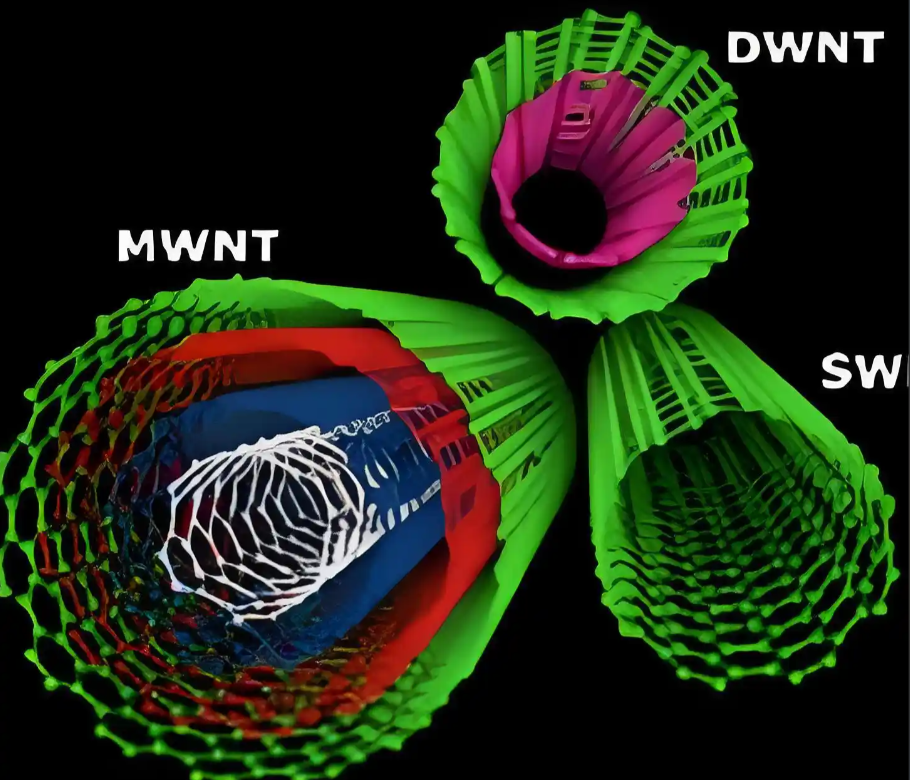Carbon Nanotubes in Supercapacitors: Accelerating the Future of Fast-Charging Energy
In a world moving toward electric vehicles, renewable energy, and wearable electronics, fast and efficient energy storage is critical. While lithium-ion batteries dominate in energy density, they struggle with charging speed, cycle life, and power output.

Supercapacitors, also known as ultracapacitors, bridge the gap—offering high power density, ultra-fast charge/discharge rates, and long cycle life. Carbon nanotubes (CNTs) play a pivotal role in advancing supercapacitor performance by acting as electrode materials, current collectors, and conductive scaffolds.
🔹 1. Understanding Supercapacitors
Supercapacitors store energy via:
-
Electrostatic charge accumulation (EDLC)
-
Fast redox reactions (pseudocapacitance)
Their key advantages include:
-
Rapid charging (seconds to minutes)
-
Over 1 million charge/discharge cycles
-
High power density (>10 kW/kg)
CNTs enhance all of these attributes when used as active electrode components.
🔹 2. Why CNTs are Ideal for Supercapacitors
Properties of CNTs that make them excellent for supercapacitors:
| Property | Impact |
|---|---|
| High surface area | Increases charge storage capacity |
| Electrical conductivity | Ensures low resistance and fast electron flow |
| Porosity and structure | Enables electrolyte diffusion |
| Chemical stability | Enhances cycling durability |
Multi-walled CNTs (MWCNTs) and single-walled CNTs (SWCNTs) can both be tailored for specific capacitor designs.
🔹 3. Electrode Fabrication Techniques
CNT electrodes can be created using:
-
Vacuum filtration into flexible films
-
Inkjet printing for micro-supercapacitors
-
Electrophoretic deposition
-
CNT–polymer composite casting
CNTs are often blended with:
-
Conductive polymers (e.g., polyaniline)
-
Metal oxides (MnO₂, NiO)
-
Graphene (to form hybrid carbon systems)
These composites combine EDLC and pseudocapacitive effects, increasing both energy and power density.
🔹 4. Real-World Applications
| Application | CNT Supercapacitor Advantage |
|---|---|
| Electric buses | Quick energy regeneration via braking |
| Portable electronics | Rapid charging and long cycle stability |
| Smart textiles | Washable, flexible energy supply |
| Medical implants | Safe, fast bursts of energy |
Researchers have created fiber-shaped supercapacitors with CNTs woven into yarns for e-textiles and implantable medical devices.
🔹 5. CNTs in Hybrid Capacitors and Energy Harvesting
Hybrid supercapacitors combine:
-
High energy of batteries
-
High power of capacitors
CNTs can serve as:
-
Anodes with redox-active coatings
-
3D scaffolds for lithium/sodium storage
-
Electrodes in self-charging systems (e.g., triboelectric nanogenerators + CNT supercaps)
🔹 6. Scalability and Challenges
| Challenge | Solution |
|---|---|
| Uniform CNT dispersion | Functionalization, surfactant-assisted mixing |
| Cost of SWCNTs | Use of low-cost MWCNTs in bulk composites |
| Contact resistance | Metal–CNT hybrid electrodes |
| Device packaging | Flexible encapsulants for wearable use |
Research into printed CNT supercapacitors on paper and flexible substrates is ongoing, paving the way for disposable power devices.
Carbon nanotubes are not just structural marvels—they are electrochemical enablers. Their role in supercapacitors continues to grow, pushing the boundaries of fast-charging, flexible, and long-lasting energy systems. From wearable biosensors to EV regenerative systems, CNT-powered supercapacitors are leading the charge toward a more efficient, electrified future.

